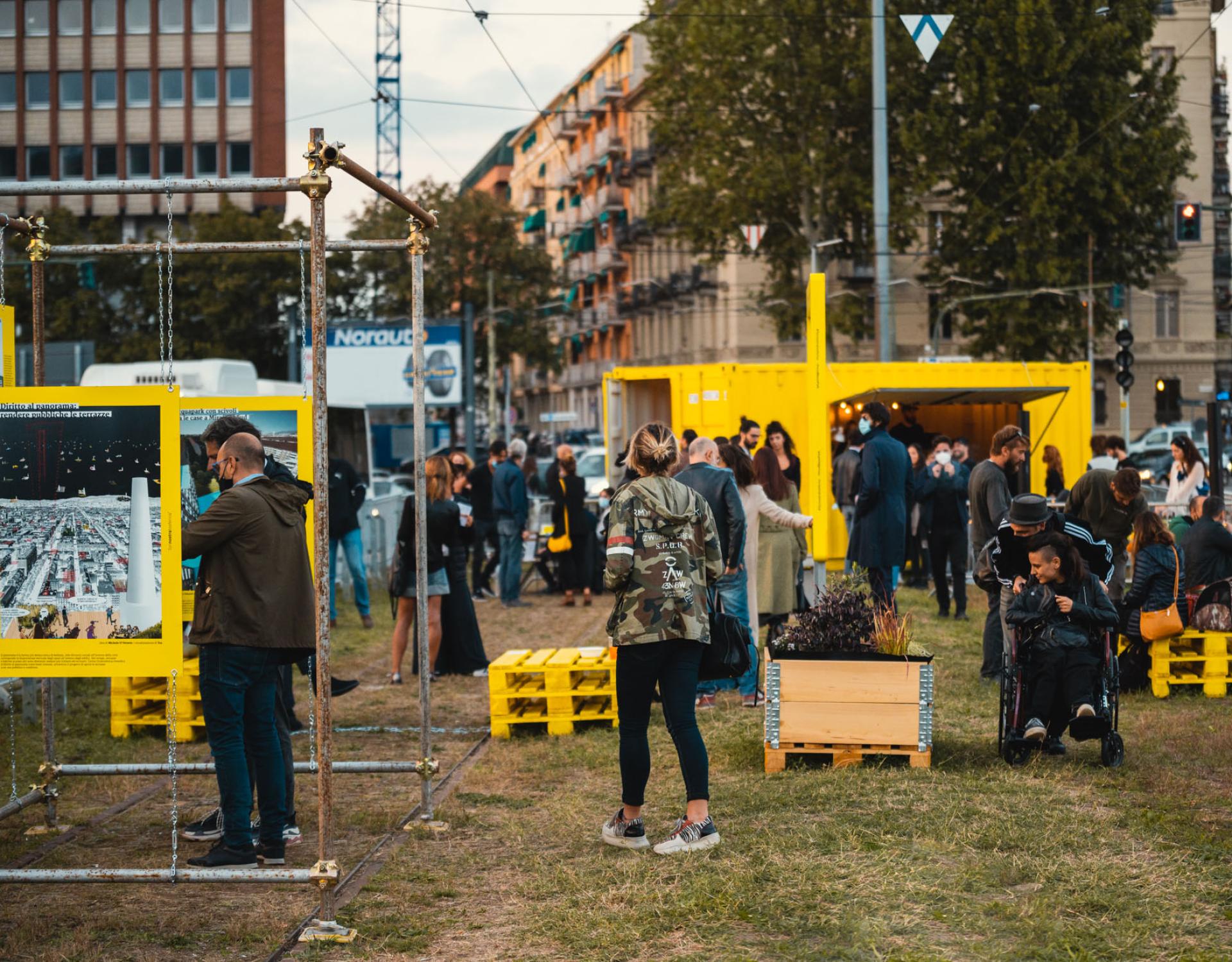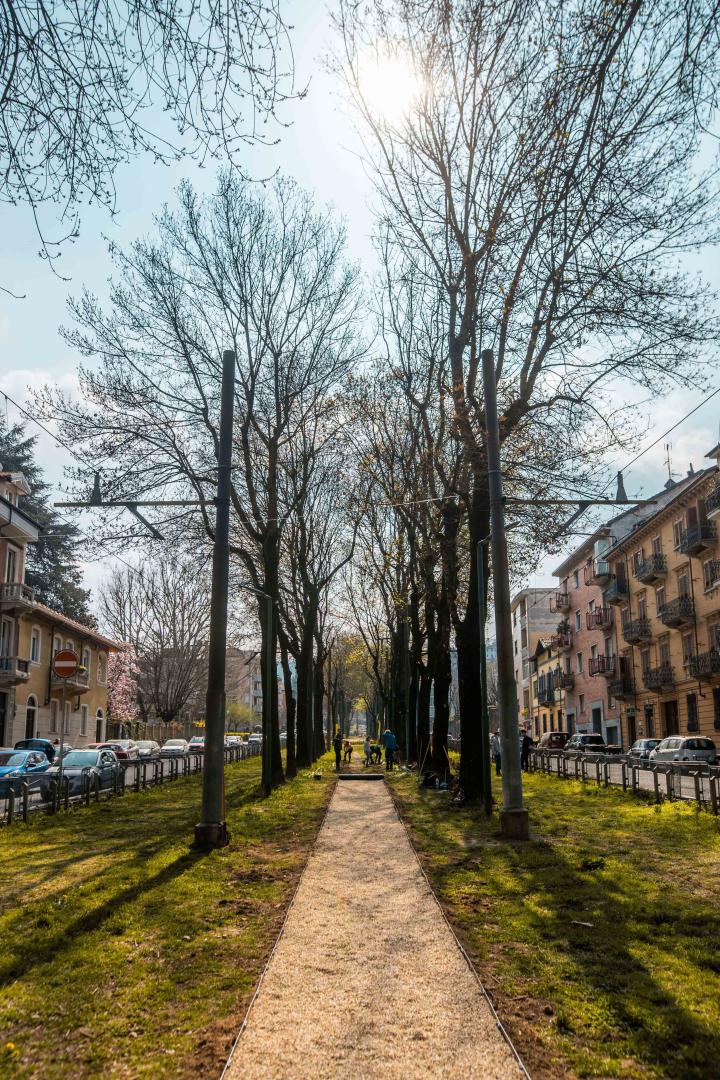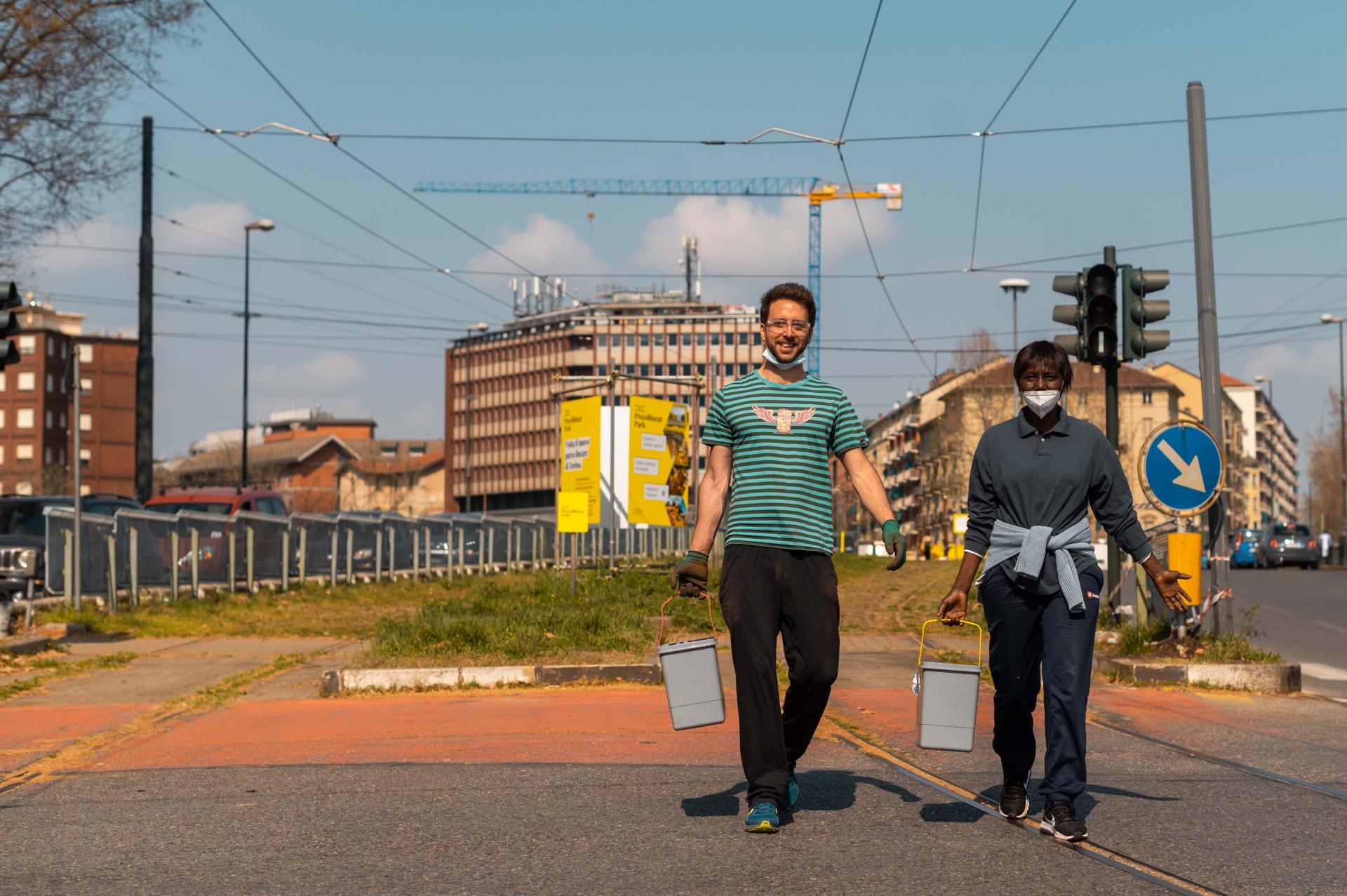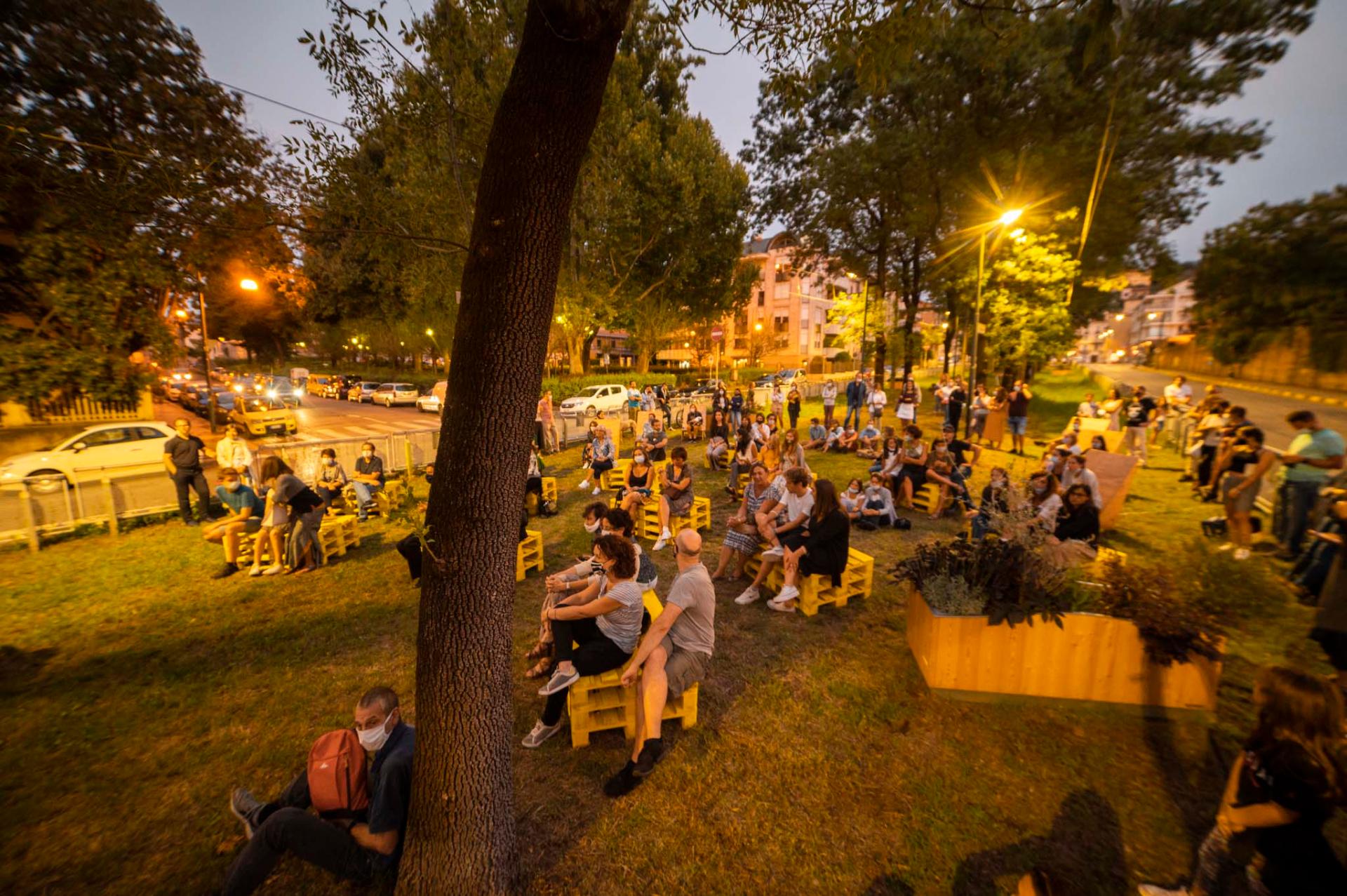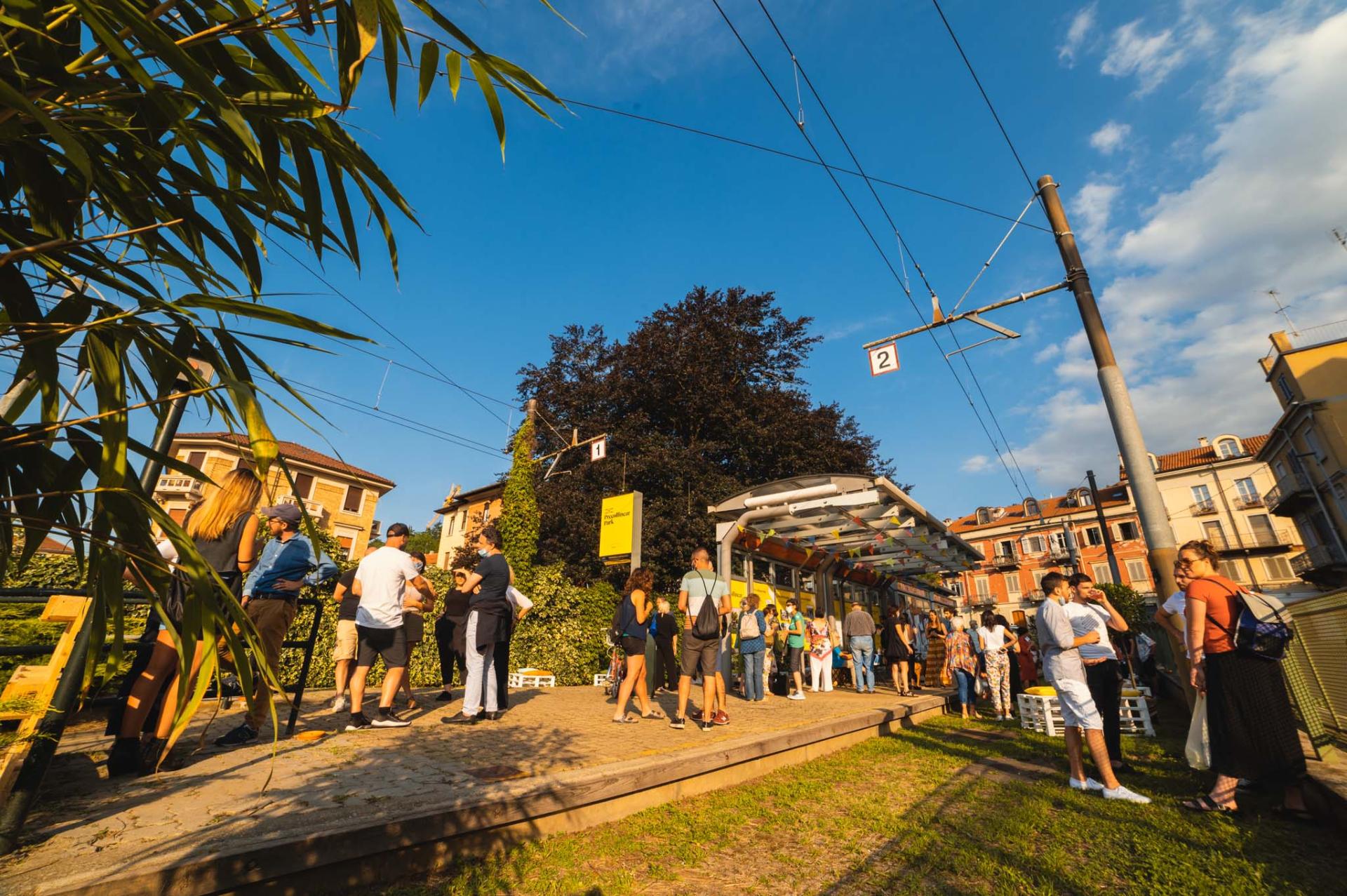The Precollinear Park
Basic information
Project Title
Full project title
Category
Project Description
The Precollinear Park is a dismissed tramway line transformed into the first urban linear park in Torino. This project, developed during the lockdown, represents the desire for a renaissance and hope for a better future. It represents a renewed consciousness based on the value of green spaces, the importance of social interaction, and the necessity of reinventing the urban environment. A new place for community, creativity, and beauty.
Project Region
EU Programme or fund
Description of the project
Summary
Precollinear Park is the first urban linear park in Turin, Italy. Stretching for over 800-meters, the park was structured on a disregarded portion of the city, divided in two by an old, unemployed, and abandoned tramline infrastructure. The park extends from Regina Margherita Bridge, uphill through the tree-lined green linear strip of Corso Gabetti, to the former tram terminal on the other end, in Piazza Hermada. This new green area unites four bordering districts and is a High-Line-style walkway but with feet firmly on the ground; much like Turin people themselves. The project was initiated by the local non-profit Torino Stratosferica and supported by a crowdfunding, bottom-up initiative which is still undergoing. A 100-members volunteer team was established and it is indeed still a key element to the maintenance and organization of events. A rich cultural event program, which spans over 2020 and 2021, gave new life to this urban area. Citizens are involved in creating a community that takes care of the space and is increasingly connected with the virtuous concepts of urban ecology and public area preservation.
Key objectives for sustainability
Sustainability is a milestone objective that we have actively pursued. Our main aim was to recover and enhance the abandoned tramway, transforming it into a new resilient public green space (goal 11 of the UN Sustainable Development Goals).
Green maintenance was the first goal that we have achieved through a series of weekly caretaking activities organized by our association and our group of volunteers. We created a draining gravel pathway that allows the natural permeability of rainwater and ensures fruition all year round and in all weather conditions (Goal 13). This is an incentive for people to use this place, stimulating a more active and healthy lifestyle (Goal 3).
We have taken care of the maintenance of plants and flowers - also in extreme summer conditions- thanks to the new waterline connection that we installed.
Management and waste reduction are pivotal for the project. The first steps consisting of daily removal of organic and anthropic waste have been followed by the installation of new garbage collectors to encourage the public to maintain a clean environment.
One of the main intentions was also to increase biodiversity (Goal 15) through the planting of different floral and plant species. This action transforms this area into a more welcoming environment that attracts pollinating insects, which number has been decreasing in recent years. This green space also increases air quality, thanks to the plants’ CO2 absorption, reducing volatile particulate matter and the heat island effect.
Another goal was the carbon footprint reduction of the newly installed elements. This was achieved by purchasing local materials. The plants come from local garden centers as does the wood used for the construction of furniture and planters. Moreover, the new urban furniture and flower boxes have been built according to a circular approach: the wood was reused, recovered by local carpenters. We have also considered new spaces dedicated to animals, as the new dog area.
Key objectives for aesthetics and quality
Torino at its best, at its most beautiful, is the mission of our non-profit since the day of its founding - this, of course, has transpired in our first placemaking initiative.
Aesthetics and quality of experience were actively pursued from the very beginning. Our aim of recovering and enhancing the abandoned green tramway was as strongly connected to the embellishment of the location as it was to the addition of new functionalities. In the project, beauty acquires an elevating dimension, that of inclusion, creativity, and activism. Through this project, we responded to a submerged need for a gathering place where to experience moments of collective care and participation. Along with the consolidation of a visual identity of the park, the main goal of the project has been the creation of a sense of place through the empowerment of the local community and the definition of common values — namely the care for public goods and for our own neighborhoods.
The installation of floral elements strategically distributed, the zig-zag bark path across the new flowerbeds, the outdoor and always available Visions by Torino Stratosferica exhibition 一 these are just some of the aesthetic and quality of experience enhancements.
The urban furniture added to the park creates visually pleasing gathering spots, the enclosed dog area allows a more serene experience to all park users, the decorative panels adorning the former tram stops provide historical information on the phases of the transformation and a large, yellow, repurposed container sits on the bridge acting as a distinctive landmark, an info point, and a pop-up bar during events.
A key objective was to allow fruition of the transformed space on an uninterrupted basis; the installation of a lighting pattern throughout the whole length of the park has served this purpose.
A sensorial experience: aroma from the many new flowers, different textures to touch, the river’s flow and birds singing, the pleasing visual aesthetic.
Key objectives for inclusion
What is now considered a park was, until a year ago, a place that divided two neighborhoods and communities. It is precisely this situation that led us to set ourselves specific goals. First of these was the creation of an active local community. Through focus groups and meetings with residents, we have created a collective path to redesign and re-activate this abandoned space.
Events and collective activities have led to the development of a cohesive intergenerational community involved in the transformation.
Another objective was to include different generations of citizens, starting with the youngest. We set up a project with schools in which students take part in gardening and urban ecology activities, in order to generate in them a strong bond with the place and a greater attention to urban, social, and environmental issues.
In order to make every space in the park accessible, previously divided by tramway barriers, we created a linear path and we are planning to create new disabled-friendly accesses with ramps.
The identity of the place has also been promoted thanks to the manual interventions of maintenance of the space, in addition to the various meetings, events and activities organized continuously throughout the year. These activities, activated in collaboration with the ever-extending group of volunteers, contributed to fortifying the engagement and the birth of a new community strongly tied to the space itself.
On the other hand, this place became a symbol of inclusion during the pandemic, reducing inequality (Goal 10, 11 of the UN Sustainable Goals). In fact, despite the lockdown, since volunteering is an activity allowed by law, we were able to continue with the collective work of managing the park. This was a moment of real intergenerational inclusion and collaboration between different communities.
Results in relation to category
The outcome of this project is the recovery of a 6000sqm disused and abandoned urban area, including the middle section of the Regina Margherita bridge, thus becoming the first urban linear park in Italy to be partly on a bridge.
The main outputs, that also respond to the United Nations Sustainable Development Goals, are identified in:
- Environmental impacts: revitalization of an abandoned area and contrast to urban blight, maintenance of green areas, creation of new gathering spaces for leisure and relaxation, new street furniture with recycled materials, planting of greenery and flowers to increase biodiversity, installation of new garbage collectors;
- Social impacts: the park is a new public place that has been built by the community and offered to the city. In fact, this has become a place of identity, able to unite the local communities of four districts, offering an intergenerational meeting space used year-round and all day long. The events and the programming of activities have reactivated the space making it attractive and safe. The new space has also proven to have educational value, hosting workshops in which children get in contact with the values of taking care of public space, sustainability, plant life, and natural cycles.
- Impact on the city branding: the impact of this project on the city has certainly been positive, drawing the attention of Italian and international media outlets such as Bloomberg City Lab, TimeOut, Monocle, and Archdaily. The project has given a new face to a public area of the city, once unattractive, now open to all, green, with a new view of the urban landscape and of its main river. The new lighting system, the recoloring of the existing infrastructure, and the iconic container have contributed to transforming the location into a new place to be and a brand that represents the city and enhances its image.
How Citizens benefit
Precollinear Park is a multifunctional space, an experiment of urban ecology that blends social innovation and civic engagement.
The project was immediately conceived as a collective process that wanted to involve all the stakeholders: the City with the Councillors, the local administrative bodies, the resident population, the schools, and the small businesses of the area.
The involvement of citizens was necessary to increase the sense of belonging and community that in the long term builds an attachment to the territory, to educate a sense of civic duty, and to promote the collective care of a common good.
In this form of co-design people benefited from the opportunity to take part in the transformation of their neighborhood, highlighting their desires and proposing solutions to overcome the criticalities of the area.
The direct benefits of this transformation were as follows:
- a new usable and resilient green space
- accessible space for the community in the midst of a global pandemic
- a recreational place for workshops, exhibitions, events
- educational space for children activities
- a new panoramic viewpoint of the city on the park’s bridge
The involvement of the civil society enabled the organization to manage the relationships with the different communities and district councils, to design and organize volunteer activities, to recover and acquire materials, and to organize cultural and educational events. The project is aimed at a very wide range of citizens. The group of volunteers consists of 100 people — from 6 to 80 years old — that regularly participate in the care of the area. Moreover, the park is the new meeting place for Millennials and GenZ, many of whom have joined the volunteer team.
Innovative character
The main innovative element of this process is the bottom-up methodology of the initiative. This space has been redeveloped through an experimental and shared path that has brought to the development of a great sense of belonging and identity in the local community.
Community engagement was developed through a series of focus groups in which the potential of the place and the desires of the people were highlighted.
This collaborative process ignited the start of the physical project, sponsored by the association through a crowdfunding initiative.
Torino Stratosferica has also experimented with what is defined as city imaging, an original approach to city branding and city-making to imagine a city at its best. The first idea for the implementation of the Precollinear Park project originated from a so-called visioning session, a brainstorming of ideas between members of the cultural & creative industry of the city. Another element of innovation was the reuse of the existing infrastructures (like the old tram stops) transformed into identity elements, stages, or spaces for art exhibitions. The birth of such an important, bottom-up transformation project, is something innovative for the city of Turin.
Moreover, the project represents a testbed for social innovation: a hybridization of physical space, design thinking, and civic engagement. An infrastructure capable of articulating values and enabling behaviors and attitudes of care with a direct impact on the community.
Lastly, one of the innovative elements of the project, related to the institutional and local context, regards the public grant to a private, non-profit institution for the upkeep of a public green area. Overall, the commitment and responsibility of Torino Stratosferica enabled citizens to benefit from a once-abandoned, inaccessible area, turned into a public park.

